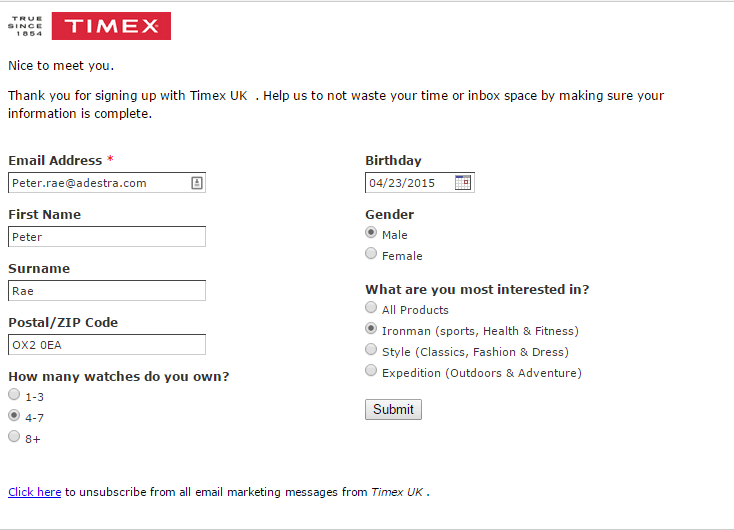Steps to creating an effective Welcome Programme
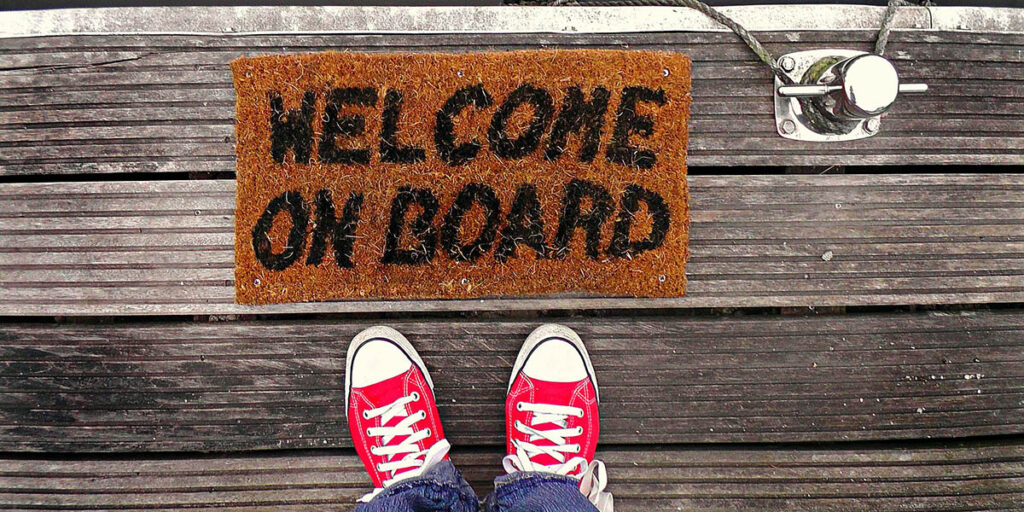

The automation is gaining more and more allies in the field of email marketing. And the fact is that in the Email Automation are all advantages, we save time and costs. Today we will see what steps we need to take to create a Welcome Programme o Welcome Program effective and we will see a very good example.
1- Decide how many emails will make up the Welcome Programme
First of all, we must decide how many emails will make up our Wecome Program. The number will vary depending on the needs of each brand, the type of products they market and the objectives set for each of the emails. Therefore, there is no exact number. For example, let's imagine that we are a hotel chain. We could design a Wecome Program of 3 emails in which the first one is a welcome email that welcomes the subscriber. The second can be a email in which the chain becomes better knownWe can also provide you with the location of your hotels and your social media profiles. Finally, we can create a third email where we offer them a subscriber discount for making a reservation.
2- Choose the message and the target of each email
As we mentioned in the previous point, each of the emails that we will send has to have a specific objective. It is not worth sending for the sake of sending. Once the objectives have been decided, the next step is to develop a message that will help us convey what we want to communicateWhat kind of goals can we set ourselves? Here is a list:![]() Get more information about the user: gender, date of birth, preferences and tastes, etc.
Get more information about the user: gender, date of birth, preferences and tastes, etc.![]() Publicise the company/brand
Publicise the company/brand![]() Informing the user about what he/she will receive from us
Informing the user about what he/she will receive from us![]() Lead the user to action by offering a discount or a free gift
Lead the user to action by offering a discount or a free gift
3- Establish the time lapse between each email.
At this point we must set the frequency of sending all emails that are part of the welcome program. Normally, the first email is sent at the moment that the user registers and tends to be a welcome email which, as the name suggests, welcomes the subscriber. The second one could be sent between 5 - 10 days after sending the first one, It all depends on the shipping policy of each company/brand. The last one could be sent between 5 - 10 days after sending the second one. Think that you know better than anyone the profile of your subscribers, you will know what is the perfect frequency not to overwhelm them but not to let them forget about you.
4- Analyse the results and, if necessary, make modifications.
Success is often achieved by trial and error, and in this case it is. It will be essential to see what results we obtain from our Welcome Program in order to see whether or not we need to make modifications. As we say: "Always find a better way", so don't stagnate and always look for ways to improve your strategy and results. You can even consider having a Welcome Program for a while and then change it or set up just one welcome email.
Here is a Welcome Program of the company Timex which, although currently no longer implemented, is a very good example.
STEP 1- Get their email
Before sending any email we need to capture the user's attention and get their email address. In this case, Timex implemented a pop-up that appeared when a user accessed the e-commerce site. The message was clear: leave me your email and you will receive a 15% discount on your first purchase. As we can see, use the principle of reciprocity to obtain the user's subscription. In other words, they offer a discount in exchange for registration.
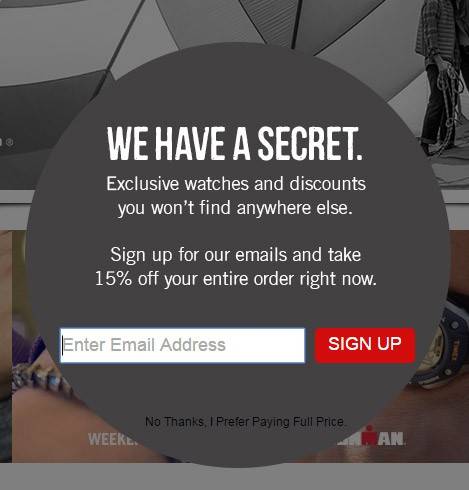
STEP 2- Welcome her with a Wecome Email
Once the user registered, he/she was automatically sent a welcome email. Here we can see how they play with the image and the fact that they feel part of a community similar to themselves. In addition, they are given the promised discount.
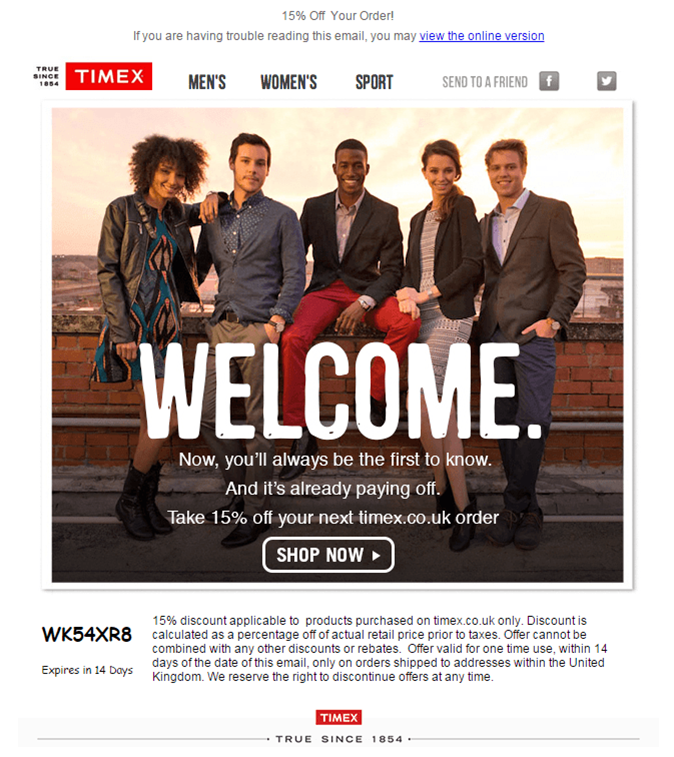
STEP 3- Get to know it a little better
Five days after receiving the first email, a second email was automatically sent. Here we were looking for collect more information about the userin this case, gender. For them it is an important fact, as they have lines of watches for both men and women.
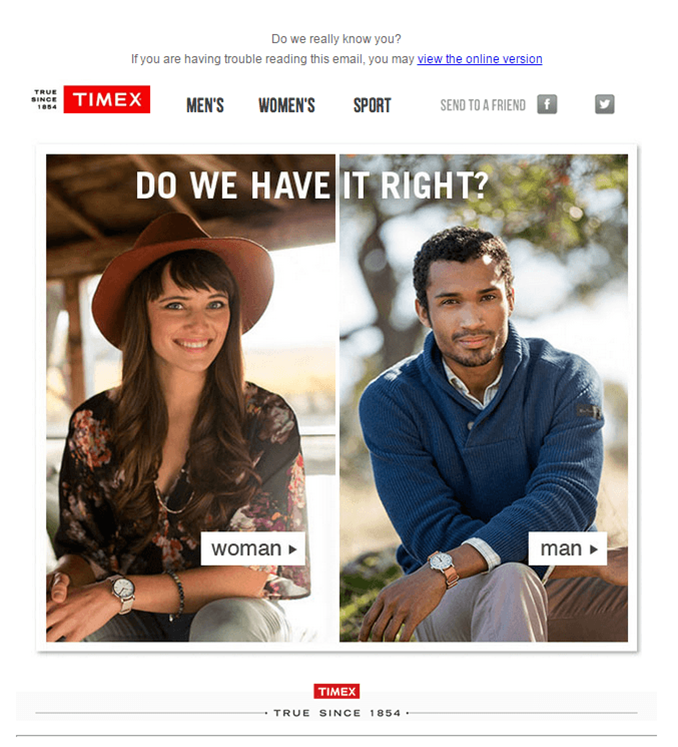
STEP 4- Give him a reward for providing more information.
Four days after receiving the second email, they received this one saying: whether or not you used the discount we gave you, we will give you £5 more in exchange for giving us more information about yourself. The purpose of this email was to get to know the subscriber much better in order to send them much more personalised communications and of interest to them.
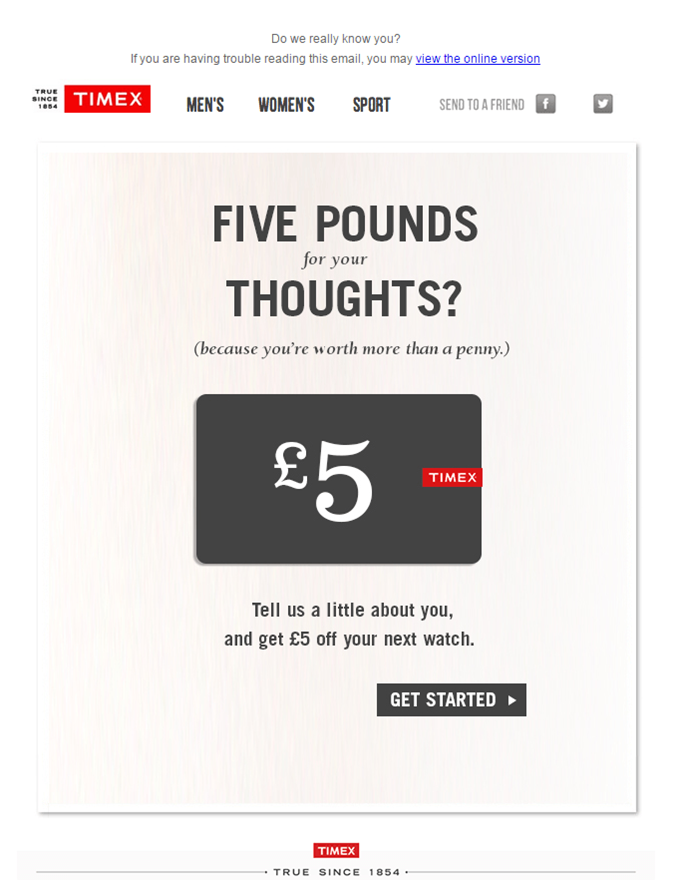
STEP 5- Choose carefully what data you need to know about the subscriber
When the user clicked on the previous email, they were taken to this one. form where he had to complete your information in exchange for the £5 mentioned above. If we want to implement a form with these characteristics, we will have to choose very carefully which information we are interested in obtaining from our subscribers.
